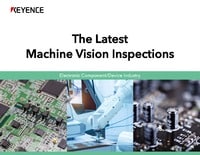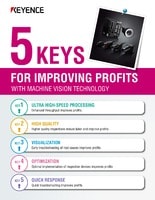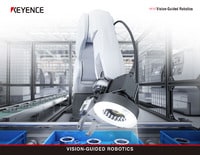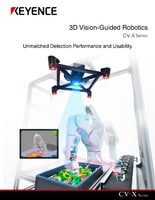Machine Vision Selection Points [Price]
The resolution (number of pixels) required for machine vision differs depending on the inspection needs. The level of detail and speed at which machine vision can perform is directly affected by its resolution. This site overviews the three main factors to consider when choosing the appropriate camera resolution, and how those factors affect price.
In general, the price of machine vision increases as the number of pixels in the camera increases.
Selecting the best camera resolution
When selecting the best camera resolution, we must look at three different points. Each factor is shown below with an easy-to-understand graph.
(1) Field of view
In general, a higher number of pixels means a smaller minimum detection size, but at a higher cost. When inspecting similar targets, if a wide field of view is necessary, a camera with a higher pixel count is required.
* The following should be used as a guide only. Imaging conditions will vary depending on the inspection target.
Contact KEYENCE for details.
- 0.31 megapixels

- Field of view: Narrow
- 2 megapixels

- Field of view: Moderately narrow
- 5 megapixels

- Field of view: Moderately wide
- 21 megapixels

- Field of view: Wide
(2) Accuracy
Performing high-accuracy inspection requires higher resolution. In addition to the number of pixels, choosing the best camera means choosing the best option—including grayscale or color, small or standard sizes—for the inspection.
* The following should be used as a guide only. Contact KEYENCE for details.
- 0.31 megapixels

- Accuracy: Low
- 2 megapixels

- Accuracy: Moderately low
- 5 megapixels

- Accuracy: Moderately high
- 21 megapixels

- Accuracy: High
(3) Processing speed
Relatively speaking, cameras with higher resolution offer higher accuracy, but also require more processing time. The information being processed, including the number of items being looked at, also has a significant effect on image processing times. This is why it is important to verify that the processing speed under the desired inspection conditions is appropriate for the inspection line takt time.
*Contact KEYENCE for details.
- 0.31 megapixels

- Processing time: Short
- 2 megapixels

- Processing time: Moderately short
- 5 megapixels

- Processing time: Moderately long
- 21 megapixels

- Processing time: Long





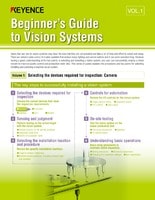


![A Technical History of Image Processing Vol.1 [Camera]](/img/asset/AS_46814_L.jpg)
![The Latest Image Processing Applications [Transportation Industry]](/img/asset/AS_71759_L.jpg)
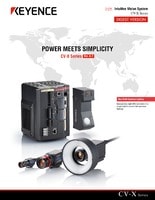
![The Latest Machine Vision Inspections [Food and Medical Industries]](/img/asset/AS_72814_L.jpg)
